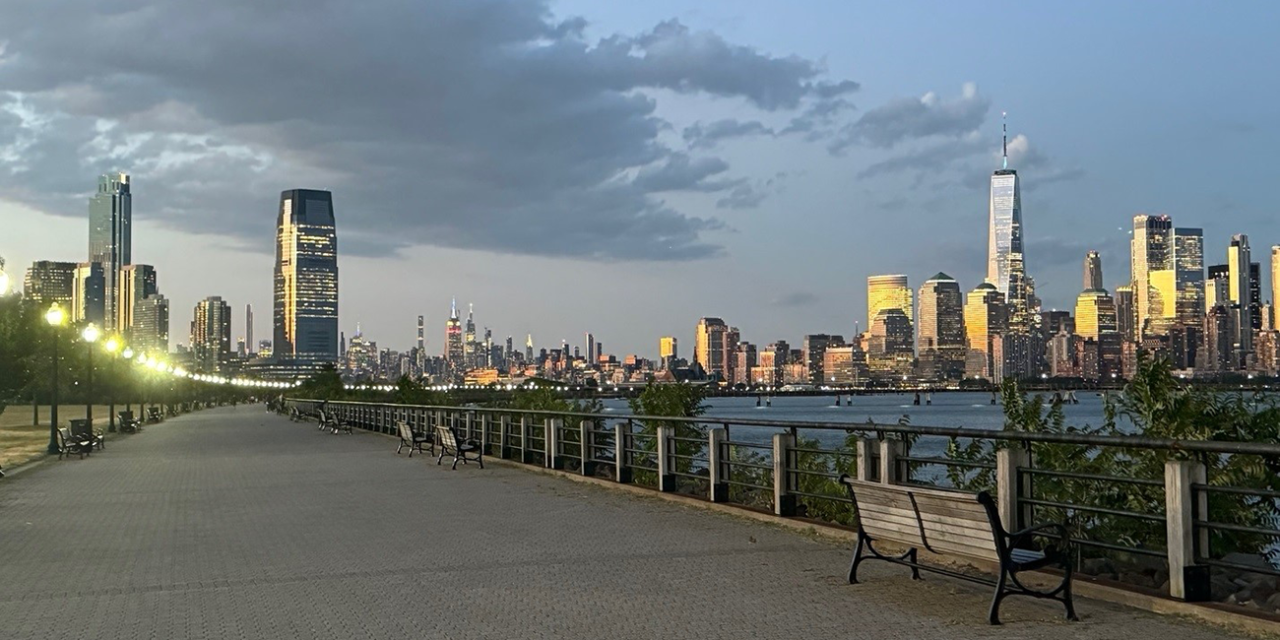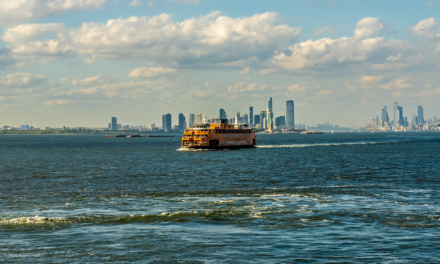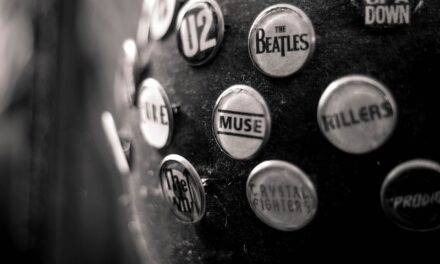Jersey City, New Jersey, will certainly vibe as a city of interesting art, culture, and progress.
From its early days as a trading post to its current status as a thriving urban center, Jersey City’s evolution showcases resilience and innovation.
Table of Contents
The Indigenous Era: A Land of Rich Heritage
Lenape Tribes
Before European settlers arrived, the land that is now Jersey City was starting to be lived in by the Lenape tribes.
- The Lenape people lived harmoniously with the land, practicing sustainable farming, hunting, and fishing.
- Their deep spiritual connection with the land laid the foundation for the region’s rich cultural heritage.
- The Lenape’s detailed knowledge of the environment influenced their lifestyle and traditions, which centered around communal living and respect for nature.
The Lenape legacy continues to influence Jersey City’s cultural fabric, reminding residents and visitors of the area’s deep-rooted history.
European Contact and Colonization
The arrival of Europeans in the early 1600s marked a significant shift for the indigenous population.
- Dutch settlers established the area as a trading post, naming it Pavonia.
- The introduction of new goods and technologies disrupted the native way of life, leading to a complex and often challenging coexistence.
- European diseases, to which the Lenape had no immunity, drastically reduced their population, leading to significant cultural and social changes.
The establishment of Pavonia by the Dutch set the stage for Jersey City’s development, intertwining European and indigenous histories.
The Birth of a City: From Trading Post to Urban Center
Early Settlement and Growth
In the 17th century, Jersey City began to take shape as a crucial trading post and settlement.
- The Dutch West India Company started to become a big player in developing the area, fostering trade and commerce.
- The settlement grew steadily, attracting a diverse population of traders, farmers, and artisans.
- The strategic location near the Hudson River facilitated the exchange of goods and ideas, making Jersey City a vital link in the colonial trade network.
The early settlement period laid the groundwork for Jersey City’s commercial and cultural expansion.
Industrial Revolution and Expansion
The Industrial Revolution brought transformative changes to Jersey City in the 19th century.
- The construction of railroads and the establishment of factories spurred economic growth and population expansion.
- Jersey City became a transportation hub, connecting goods and people across the region.
- The city’s waterfront saw the rise of docks, warehouses, and industries, cementing its role as a commercial powerhouse.
This era of industrialization marked Jersey City’s rise as a key economic player in the region.
The Twentieth Century: Urbanization and Diversity
Economic Shifts and Challenges
The early 20th century saw Jersey City grapple with economic shifts and challenges.
- The decline of manufacturing industries led to economic hardships and changes in the city’s demographic makeup.
- Despite these challenges, Jersey City’s diverse communities contributed to its rich cultural mix.
- The city became a melting pot of cultures, with waves of immigrants bringing new traditions, languages, and cuisines, enriching the urban experience.
These shifts highlight Jersey City’s resilience and ability to adapt to changing economic landscapes.
Revitalization and Development
The latter half of the 20th century marked a period of revitalization for Jersey City.
- Urban renewal projects and investments in infrastructure transformed the cityscape.
- The development of the waterfront area brought new businesses, residences, and cultural attractions, reinvigorating the local economy.
- Initiatives such as the construction of Liberty State Park and the establishment of the Historic Downtown Special Improvement District played key roles in the city’s revival.
Revitalization efforts breathed new life into Jersey City, balancing growth with heritage conservation.
Modern Jersey City: A Hub of Culture and Innovation
A Thriving Urban Center
Today, Jersey City is a bustling urban center known for its cultural opulence, bountiful arts scene, and economic vitality.
- The city’s skyline is dotted with modern skyscrapers, reflecting its status as a financial and business hub.
- Jersey City’s neighborhoods offer a blend of historical charm and contemporary living, attracting residents and visitors alike.
- The city’s thriving art scene, including galleries, theaters, and festivals, showcases its creative energy.
Modern Jersey City thrives as a dynamic urban center, blending history with contemporary vibrancy.
Education and Innovation
Jersey City is home to several prestigious educational institutions and innovation centers.
- Universities and colleges in the city foster academic excellence and research, contributing to the region’s intellectual capital.
- Innovation hubs and tech startups thrive in Jersey City, driving economic growth and technological advancements.
- The presence of institutions like New Jersey City University and Stevens Institute of Technology enhances the city’s reputation as a center for learning and innovation.
Educational and innovation initiatives continue to propel Jersey City into a future of growth and discovery.
Q&A: Exploring Jersey City’s Rich Past and Present
How did Jersey City’s early days as a trading post shape its development?
- The trading post established Jersey City as a center of commerce in the 17th century, laying the foundation for its growth as a bustling urban center.
- The strategic location near major waterways facilitated trade and attracted diverse settlers, fostering early economic development.
The early trading post roots were critical in shaping Jersey City’s commercial and cultural landscape.
What role did the Industrial Revolution play in Jersey City’s history?
- The Industrial Revolution spurred economic growth and population expansion, establishing Jersey City as a crucial transportation and manufacturing hub.
- The city’s industrial base attracted workers from across the country and the world, contributing to its demographic diversity.
Industrialization cemented Jersey City’s status as a vital economic center.
How has Jersey City’s demographic diversity influenced its culture?
- The city’s diverse communities have enriched its cultural landscape, contributing to a vibrant arts scene and a dynamic social fabric.
- Festivals, lots of cultural events, and a wide variety of dining options reflect the city’s multicultural heritage.
Jersey City’s cultural richness is a testament to its diverse population.
What factors contributed to Jersey City’s revitalization in the late 20th century?
- Urban renewal projects, investments in infrastructure, and the development of the waterfront area played key roles in revitalizing Jersey City.
- Efforts to preserve historic districts while encouraging new development helped balance progress with heritage conservation.
Revitalization efforts helped balance Jersey City’s growth with the preservation of its historical charm.
How does Jersey City balance historical preservation with modern development?
- The city maintains its historical charm through preservation initiatives while embracing modern development to support economic growth and urban living.
- Policies promoting the adaptive reuse of historic buildings and the creation of wonderful green spaces have contributed to a sustainable urban environment.
Balancing historical preservation with modern development has created a sustainable urban environment in Jersey City.
What makes Jersey City an attractive destination for residents and businesses today?
- Jersey City’s cultural diversity, robust economy, excellent educational institutions, and strategic location make it an appealing destination for both residents and businesses.
- The city’s commitment to innovation, sustainability, and community engagement enhances its appeal.
Jersey City’s vibrant culture, strong economy, and strategic location make it an attractive destination.
Jersey City’s Evolution and Future Prospects
Jersey City has evolved from a humble trading post into a dynamic urban center, characterized by its rich history, cultural diversity, and innovative spirit.
The city’s journey through time highlights its resilience and ability to adapt to changing circumstances.
As Jersey City continues to grow and develop, it remains committed to preserving its unique heritage while embracing modern advancements. The city’s future promises to be as vibrant and diverse as its past, with new chapters waiting to be written by its residents and leaders.
Ongoing efforts to balance development with sustainability, foster community engagement, and promote economic vitality will shape Jersey City’s trajectory in the years to come.
The city stands poised to continue its legacy as a place where history, culture, and innovation intersect, offering a promising future for generations to come.





